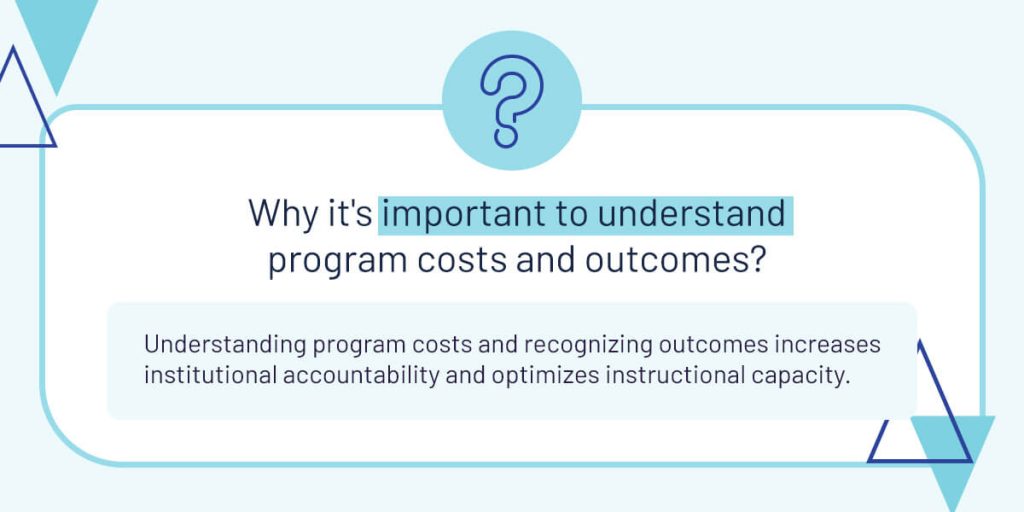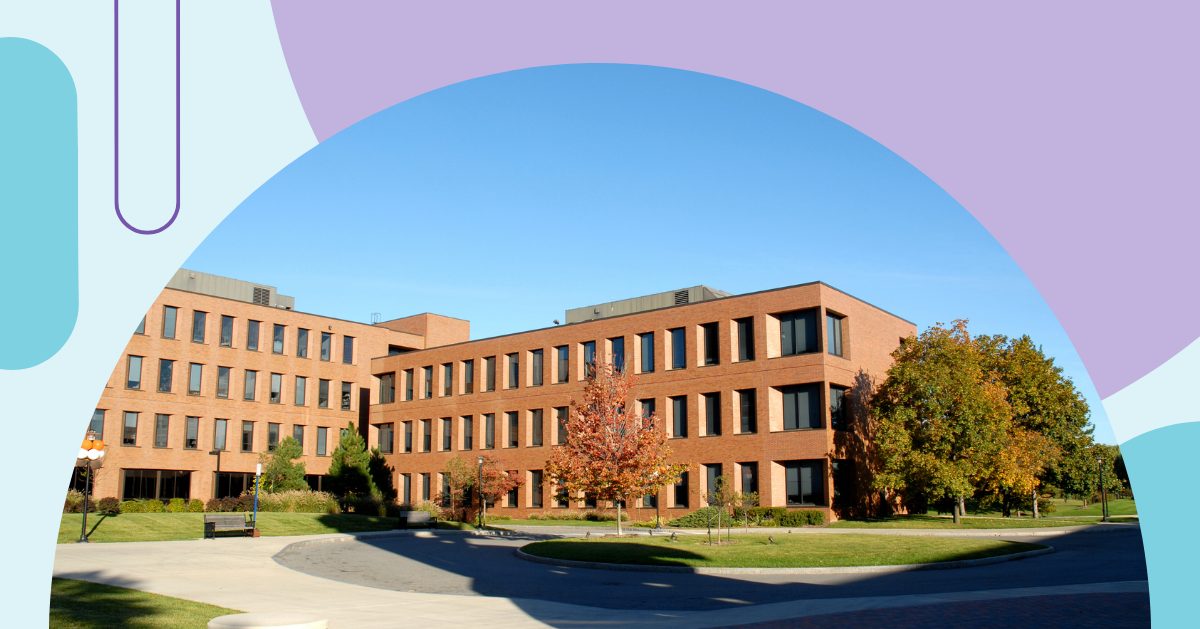
Why do some degrees cost more than others? How much should a degree cost? The answers to these questions vary but often relate to what a student pays for tuition and how much they earn post-graduation.
A graduate’s return on their educational investment relies on the labor market value of their degree compared to what the graduate paid to complete their education. However, other factors can impact these numbers.
For example, a field with exceptional anticipated growth, such as computer science or engineering, may be more likely to receive grants, equipment, or other assets to encourage program enrollment, which could translate to lower student tuition costs. Meanwhile, an institution without the necessary financial support could raise student costs to ensure programs have the staffing and equipment necessary to make a degree worthwhile.
As a higher education decision-maker, you hold a responsibility to balance the cost of different degrees while ensuring every student gains the knowledge, skills, and experience they need to succeed after graduation.
Rising instructional costs and the impact on students and institutions
A common challenge in higher ed is rising instructional costs, which significantly impact students and institutions. For students, higher costs often equate to increased student debt and reduced access to education. Many students experience increased work-study stress as they work more hours to accommodate the rising costs. Students may also experience higher levels of stress or develop mental health conditions like depression and anxiety while trying to combat tuition cost increases.
Rising costs also impact institutions. Colleges may face budget constraints that could result in program cuts or a loss of faculty and student services. With reduced public funding, institutions often rely more heavily on student fees and tuition, which can make it harder to attract prospective students. Over time, significant budget restraints, program cuts, or a lack of student interest can impact the institution’s reputation and perpetuate the vicious cycle.
Although several factors contribute to rising education costs, some of the most prevalent include:
Falling state funding
Funding for higher education varies significantly across the country, but it has generally declined over the last several years. Recent studies show that more than 30 states spent less on public education in 2020 compared to 2008, averaging a decline of almost $1,500 per student. Deep funding cuts have resulted in significant consequences for public institutions, including raised tuition and reduced student services and academic opportunities.
Faculty type and class size
Department salaries vary between adjunct and tenure-track instructors. Generally, tenure-track instructors are more expensive for an institution, causing spending increases for departments with higher tenured faculty members.
Class sizes also play a role. Large classes are generally less expensive because institutions can reduce staffing costs and increase efficiency by having more students in class at one time. However, upper-level courses and graduate programs tend to have smaller classes and, therefore, are more expensive. This phenomenon impacts entire programs because fields with less undergraduate instruction, such as engineering and nursing, tend to be more expensive as classes are typically smaller.
Cost of instruction
Instruction style also impacts institutional spending. Traditional teaching in a face-to-face environment tends to be more expensive than online or hybrid instruction methods. Traditional teaching styles rely on physical environments, leading to daily utility costs. A traditional style also relies on pen-and-paper grading and testing methods, which can decrease inefficiency.
Alternatively, online and hybrid instruction can lower costs by reducing campus presence and streamlining administrative tasks. However, some programs are more suitable for online learning than others. For example, writing courses may be more suitable for an online learning model than a chemistry program that relies on hands-on experience and real-time observations.

Why it’s important to understand program costs and outcomes
Understanding program costs and recognizing outcomes increases institutional accountability and optimizes instructional capacity. You can leverage this information to promote continuous improvement on campus and maximize your impact through:
- Informed decision-making: Program insights and reliable cost information drive informed decision-making. You can leverage this information to ensure strategic resource allocation and prioritize high-value programs for your institution and students.
- Maximized program value: Understanding outcomes empowers you to identify strengths and weaknesses within your programs. These insights can guide curriculum adjustments and allow you to perform targeted interventions to enhance student learning.
- Reduced financial hardship: Recognizing the relationship between spending, student outcomes, and institutional initiatives can reduce financial hardships for institutions and students. For institutions, efficient resource allocation can reduce overall spending or guide investments for long-term benefits. For students, cost transparency can result in more affordable tuition and fees.
- Enhanced program enrollment: By prioritizing resource allocation and understanding program outcomes, you can highlight program efficiency and lower student costs to make your institution more attractive and accessible to prospective learners.
- Aligned learning outcomes: Institutions that analyze outcomes related to industry trends and employment can better align programs to meet workforce needs, enhancing student employability. With effective alignment, you can enhance student outcomes, maximize program effectiveness, meet stakeholder expectations, and boost your reputation.
How Watermark’s solutions can help with managing instructional costs
At Watermark, we understand that insights drive change, and we support continuous improvement through data collection and automation. As students scrutinize degree costs more carefully, our analytics help institutions measure and showcase program outcomes, proving educational value and justifying tuition investments.
Our solutions empower you to:
- Collect and integrate data: The Watermark Educational Impact Suite (EIS) collects data from across institutional systems and creates a centralized hub for information access. You can collect and analyze information regarding student performance, program efficiency, and instructor growth to inform faculty reviews, strengthen assessment practices, and drive innovation. With a plethora of datasets at your fingertips, you can leverage data-driven decision-making and support meaningful change across campus.
- Gain real-time visibility: With our EIS, you can access real-time insights into program efficiency, student performance, and spending habits. You can discover trends, automate interventions, and identify program weaknesses. Additionally, our partnership with Lightcast allows us to bring labor market insights to guide strategic decisions and enhance program development.
- Simplify curriculum strategy: Watermark’s Curriculum Strategy empowers you to build and share a curriculum that boosts student success. Our curriculum management software enables you to customize catalogs to ensure updated offerings, use visual workflows to build proposals and workflows, increase collaboration, and streamline digital processes. You can leverage this solution to understand the value of your programs and make informed decisions regarding investments.
Harness the power of information
Watermark crafts innovative solutions to help higher education institutions overcome challenges with student success, program effectiveness, faculty reviews, and institutional spending. Data drives us, and we aim to help you leverage this critical information to enhance efficiency and support meaningful change.
Ready to spark change on campus? Schedule a demo with one of our representatives to discover how we can help you balance instructional program costs and maximize impact.
















































































































































































































































































































































































































